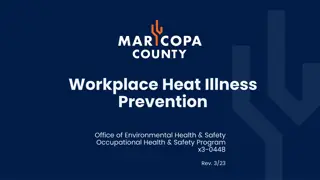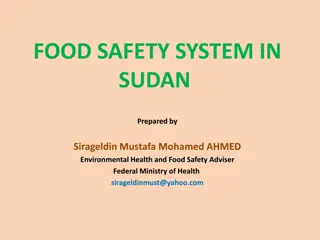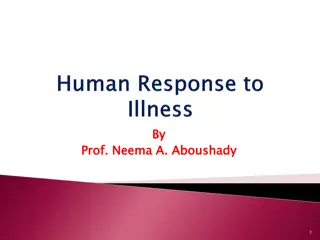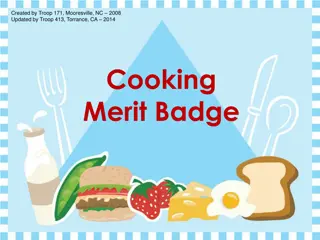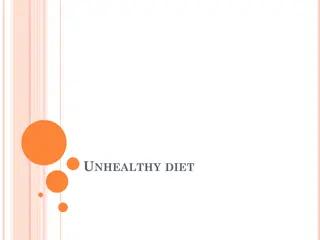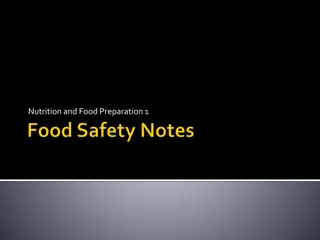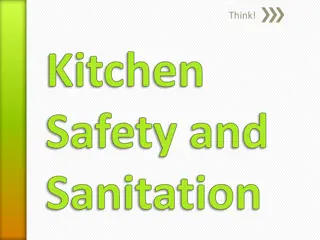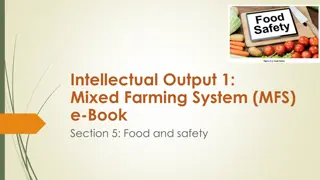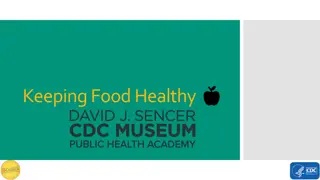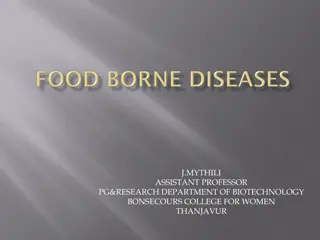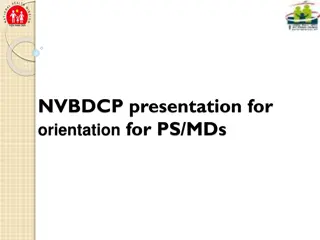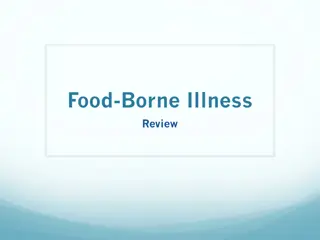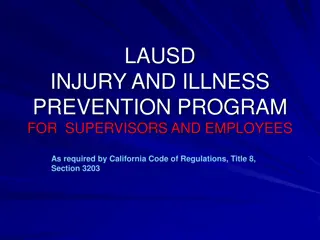Food Safety and Preventing Food-borne Illness
This lesson focuses on the importance of food safety, addressing how clean our food is and at what points safety can be compromised. It delves into common types of microbes that contaminate foods and explores ways in which food safety can be compromised. The activity involves case studies on food safety, encouraging students to work in groups to analyze different scenarios. The lesson also covers techniques to prevent food-borne illnesses by identifying contaminants in various food types and suggesting appropriate preventive measures. The wrap-up prompts critical thinking about consumer practices to prevent foodborne illnesses and the effectiveness of such strategies.
Download Presentation

Please find below an Image/Link to download the presentation.
The content on the website is provided AS IS for your information and personal use only. It may not be sold, licensed, or shared on other websites without obtaining consent from the author. Download presentation by click this link. If you encounter any issues during the download, it is possible that the publisher has removed the file from their server.
E N D
Presentation Transcript
Metabolic Diseases Lesson 1.3 How clean is your food?
Do Now The food we eat has been handled by numerous people, how safe is it? At what points can safety be compromised?
Food safety The food we eat has been handled by numerous people, how safe is it? At what points can safety be compromised? What types of microbe commonly contaminate foods? Are there any other ways food safety could be compromised?
Activity Food Safety Case Studies Break into four groups and compete the case study worksheets. In 20 minutes one member of your group will give a three minute brief to the class on your case.
Details Case 1 Case 2 Case 3 Case 4 When did it happen? What food was affected? How many people got sick? What were the signs or symptoms? What microbe or toxin caused it? What was done? How could it have been avoided?
Wrap Up We have been focusing on contamination of food in the context of food production. Are we passive victims of the industrial food machine? Or are there practices we as consumers can use to prevent foodborne illness? How effective are those strategies likely to be?
Preventing food-borne illness Food Contaminant Technique Meat Fatty fish Eggs Dairy Leafy vegetables Sprouts Thin skinned fruit Thick skinned fruit Fruit juices 7
Preventing food-borne illness Food Contaminant Technique Meat Salmonella, E. Coli, Antibiotics Fatty fish Mercury Eggs Salmonella Dairy Listeria, antibiotics Leafy vegetables Salmonella, E. Coli, pesticides Sprouts E. Coli Thin skinned fruit Pesticides Thick skinned fruit Listeria Fruit juices Pesticides 8
Preventing food-borne illness Food Contaminant Technique Meat Salmonella, E. Coli, Antibiotics Smell & color; dispose of wrappings; cook thoroughly; store safely; dispose of in a timely way; limit exposure Fatty fish Mercury Limit intake Eggs Salmonella Store at proper temperature; cook properly; do not use after sell-by date. Dairy Listeria, antibiotics Store at proper temperature; do not use after sell- by date; limit intake. Leafy vegetables Salmonella, E. Coli, pesticides Wash properly* Sprouts Salmonella, E. Coli Wash properly* Thin skinned fruit & vegetables Pesticides Wash properly, cook Thick skinned fruit & vegetables Listeria Wash then remove skin Fruit juices Pesticides Limit intake of processed juices 9
What does your kitchen look like? Food Contaminant Hands Wash hands for at least 45 seconds, especially after handling raw meat Storage Make sure refrigerator is at 40 F and freezer is at 0 F or less . Clean up spills immediately. Countertops Clean spills immediately. Disinfect regularly. Cutting boards Avoid cross-contamination by using separate boards for meat and vegetables. Sponges Microwave for 1 minute once a week or put in dishwasher. Don t use for more than a month. Dishrags Wash regularly at high temperature Utensils Wash after touching raw meat and use separate utensils for meat and vegetables. 10
Homework Over the rest of Unit 1 we will begin to focus on what s in food that s actually nutritious - the nutritional components of foods. Tonight, set up an account in MyPlate: http://www.choosemyplate.gov/supertracker-tools/supertracker.html Use the worksheet to track what you ate at your last three meals Identify the major components (protein, fats, carbs, vitamins, fiber and water) that were in each of those meals




